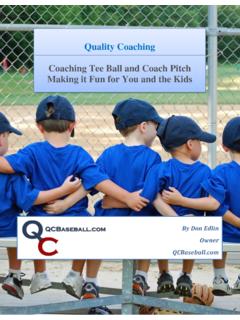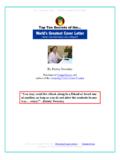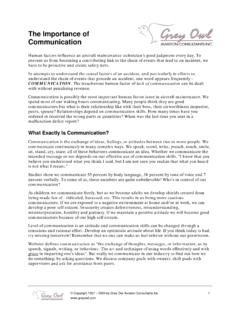Transcription of Geriatric Assessment Tools
1 Geriatric Assessment Tools Dr. Hermes Geriatric Assessment Learning Objectives 1. Identify factors contributing to the need for specialized Assessment of the frail older adult 2. Discuss the benefits of a Geriatric Assessment 3. Describe the components of a Geriatric Assessment 4. Identify the Tools used in a Geriatric Assessment 5. Apply components of the Geriatric Assessment to practice situations United States Demographics 13% of US population> 65 years old >85 years old fastest growing segment 100,000 to 120,000 new 85 year olds per year rate of chronic diseases United States Demographics Chronic Health Over Time Geriatric Assessment Multidisciplinary evaluation in which the multiple problems of older persons are uncovered, described, and explained, if possible, and in which the resources and strengths of the person are catalogued, need for services assessed, and a coordinated care plan developed to focus interventions on the person's problems.
2 1987 NIH Consensus Conference on Geriatric Assessment Methods for Clinical Decision-Making 3-step process: 1. Targeting appropriate patients 2. Assessing patients and developing recommendations 3. Implementing recommendations Geriatric Assessment Randomized Trials - A cost-effective intervention that improves Quality of life Quality of health Quality of social care Benefits have been most robustly demonstrated when applied in a hospital or rehabilitation unit, Also evident: After hospital discharge As an element of outpatient consultation In home Assessment services In continuity care Who needs a Geriatric Assessment ? All Older Persons Apply Targeting Criteria Too Sick to Benefit Appropriate and Will Benefit Too Well to Benefit Critically Ill or Medically Unstable Multiple interacting One or a few medical Terminally Ill biopsychosocial problems conditions that are amenable to Disorders with no effective treatment treatment Needing prevention Disorders that require measures only Nursing Home Placement rehabilitation therapy Dependent in all ADLs Who Needs Assessments?
3 Patients with living situation in transition Recent development of physical or cognitive impairments Patients with fragmented specialty medical care Evaluating patient competency/capacity Dealing with medico-legal issues NIH Consensus Devt Conf JAGS, 1990. With What? Evaluating an Assessment tool : A valid measure of the function being tested Adequate inter-rater and test-retest reliability Should be sensitive to clinically important changes in the patient's status Applegate WB NEJM, 1990. Use of Clinical Judgment vs. Assessment Tools # of Patients Pinholt Arch Int Med. 1987. Domains of a Geriatric Assessment Medical Social Support Functional (physical) Environmental Cognitive Economic Factors Mood Quality of Life Geriatric Assessment : Functional Domain A summary measure of the overall impact of health conditions in the context of his or her environment and social support system Why Care about Function?
4 Pre-Admission and Discharge ADLs of Patients with Functional Decline During Index Hospitalization % Independent Sager MA Arch Intern Med. 1996. Domains of Geriatric Assessment Psychological Physical Behavioral Environment Cognitive Social Functional Status Gait/Balance Economic Physical Quality of Life Geriatric Assessment BASIC ACTIVITIES OF DAILY LIVING: Refers to self-care tasks Bathing Dressing Independent Toileting Assistance Transfer Dependent Continence Feeding Katz S et al., 1963. Geriatric Assessment INSTRUMENTAL ACTIVITIES OF. DAILY LIVING: Refer to the ability to maintain an independent household Telephone Traveling Shopping Independent Preparing meals Assistance Housework Dependent Medications Money THE OARS METHODOLOGY, 1978.
5 TIMED UP AND GO TEST. Task: Rising from an armless chair Walking 3 meters (10 feet). Turning Walking Back Sitting down again Ambulate with or without assistive device and follow a three step command. Trials: One practice trial and three actual trials Strongly correlated to level of functional mobility The more time taken = the more dependent in ADLs PODSIADLO D AND RICHARDSON, S. JAGS, 1991. SHUMWAY-COOK et al., Physical Therapy, 2000. Timed Up and Go Test Should be completed in 10-14 seconds Further evaluation required if test no performed in 30 seconds Rating <10 Freely Mobile <20 Mostly Independent 20 to 29 Variable Mobility >30 Impaired Mobility Sensitivity = 87%. Specificity = 87%. PODSIADLO D AND RICHARDSON, S. JAGS, 1991. SHUMWAY-COOK et al.
6 , Physical Therapy, 2000. Geriatric Assessment : Cognitive Domain Cognitive Dysfunction Dementia Prevalence: 30% in community-dwelling patients >= 85 years Alzheimer's disease and vascular dementias comprise >=80% of cases Risk for functional decline, delirium, falls and caregiver stress FOLEY, HOSP MED, 1996. Geriatric Assessment THE FOLSTEIN MENTAL STATE EXAMINATION. Orientation: What is the year/season/date/day/month? Where are we (state/county/town/hospital/floor)? Registration: Name 3 objects: 1 second to say each. Then as the patient all 3 after you have said them. Attention/Calculation: Begin with 100 and count backwards by 7. Alternatively, spell WORLD backwards. Recall: Ask for all 3 objects repeated above. Geriatric Assessment THE FOLSTEIN MENTAL STATE EXAMINATION.
7 Language: Show a pencil and a watch and ask the patient to name them. Repeat: No ifs, ands, or buts.. A 3 stage command: Take the paper in your right hand, fold it in half, and put it on the floor. Read and obey the following: CLOSE YOUR EYES. Ask a patient to write a sentence. Copy a design (complex polygon). Geriatric Assessment Clock Completion Test: A neuropsychological Assessment instrument that depends on the concept of time WATSON, YI, et al. JAGS, 1993. Clock Completion Test 12 0/1. 0/4 11 1. 10 2. 9 3. 8. 4. 0/1 7 5 0/1. 6. Clock Completion Test 12 0/1. 0/4 1. 2. 3. 4. 5. 11. 6. 0/1 10. 7 0/1. 9 8. Clock Completion Test 12. 1. 2. 3. 4. 5. 6. 7. 8. 9. 11 10. The Mini-Cog Components 3 item recall: Give 3 items Ask to repeat Divert And Recall (Score: 1 point for every word recalled).
8 Divert using: Clock Drawing Test (CDT). BORSON, S. ET AL INT J GERIATR PSYCHIATRY 2000;15:1021-1027. Clock Drawing Test Instructions Subjects told to: Draw a large circle 12. 11 1. Fill in the numbers on a clock 10 2. Set the hands at 8:20 9 3. No time limit given 8 4. Scoring: 7 5. 6. Normal: All numbers present in correct sequence and position and hands readily displayed the represented time Abnormal BORSON, S. ET AL INT J GERIATR PSYCHIATRY 2000;15:1021-1027. The Mini-Cog Possible Scores: 0 to 5. 0-2= HIGH likelihood of cognitive impairment 3-5 = LOW likelihood of cognitive impairment Inter-rater reliability: 93-95%. BORSON, S. ET AL INT J GERIATR PSYCHIATRY 2000;15:1021-1027. The Mini-Cog The Mini-Cog scoring algorithm. The Mini-Cog uses a three item recall test for memory and the intuitive clock drawing test.
9 The latter serves as an informative distractor, helping to clarify scores when the memory recall score is intermediate. Mini-Cog Recall = 0 Recall = 1-2 Recall = 3. DEMENTED NONDEMENTED. Clock Abnormal Clock Normal DEMENTED NONDEMENTED. BORSON, S. ET AL INT J GERIATR PSYCHIATRY 2000;15:1021-1027. Test Performance Outperformed MMSE and CASI. (Cognitive Abilities Screening Instrument) in those with less education and non-native English speakers and acceptable sensitivity of 93%. Time = 3 minutes BORSON, S. ET AL INT J GERIATR PSYCHIATRY 2000;15:1021-1027. The Mini-Cog A quick initial screening tool for dementia Appears to be as good as the MMSE and CASI. Performs better in multiethnic populations or those with less education Can be administered and scored by na ve raters with little loss of test characteristics If abnormal, needs further workup and informant interview Validated in different population Multi-Ethnic population BORSON, S.
10 ET AL INT J GERIATR PSYCHIATRY 2000;15:1021-1027. Category Fluency Animal Naming /Category Fluency Part of the 7 minute neurocognitive screening battery Highlysensitive to Alzheimer's Disease Measures impairment in verbal production and across to semantic memory Scoring equals number named in 1 minute Average performance = 18 per minute <12/minute = abnormal Correlation with MMSE (r= ). SOLOMON PR ARCH, NEUROLOGY, 1998. Depression 10% of >65 year olds with depressive symptoms 1% with major depressive disorder Associated with physical decline of community-dwelling adults and hospitalized patients FOLEY K HOSP MED, 1996. Geriatric Depression Scale: Short Form 1. Are you basically satisfied with your life?*. 2. Have you dropped any of your activities?






